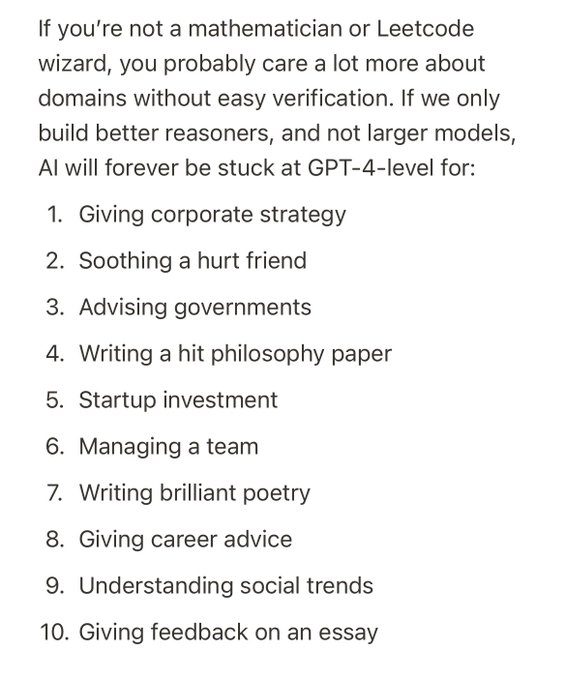The Advancements in Large Language Models (LLMs)
Large Language Models (LLMs) have made significant strides in recent years, particularly in domains that can be verified for correctness. According to a recent tweet, LLMs have shown remarkable progress in math and coding over the past two years. This improvement is attributed to the ability of these models to handle tasks where the correctness of the output can be easily verified.
In the realm of mathematics, Google’s DeepMind has developed AI programs like AlphaProof and AlphaGeometry 2, which specialize in math reasoning and geometry. These advancements signify progress in AI’s ability to solve complex problems, potentially impacting fields like mathematics and scientific research.
The Role of LLMs in Coding
LLMs have also made significant progress in coding. The ability of these models to understand and generate code has improved, making them valuable tools for developers. Companies like Microsoft are leveraging LLMs to support and collaborate with Indian startups in various sectors, including FinTech, HealthTech, and Real Estate. Microsoft’s established expertise in AI and cloud computing, combined with its commitment to fostering the Indian startup ecosystem, has led to the development of innovative solutions using LLMs.
For instance, a Bengaluru-based engineering team built an AI application that automates 10-Q filings for US companies, traditionally handled by accounting firms. By training a deep-learning model on top of open-source LLMs, the team reduced the time needed to generate these filings to under an hour. This example demonstrates India’s unique advantage in building new AI applications on top of LLMs, as highlighted by Accel partner Shekhar Kirani.
Challenges and Limitations of LLMs
Despite the progress in math and coding, LLMs still face challenges in other domains. These models have not made significant progress in areas where the correctness of the output is subjective or harder to verify. For example, LLMs like ChatGPT can struggle with providing accurate health-related information, as discussed in a study that highlights the limitations of LLMs in providing accurate health information.
Moreover, the use of LLMs in education has raised concerns about academic integrity. A recent incident involving a law student suing OP Jindal Global University after receiving a failing grade for an AI-generated answer underscores the potential issues with relying on LLMs for academic purposes. This case, reported by Economic Times, highlights the need for clear guidelines and policies regarding the use of AI in education.
The Future of LLMs
As LLMs continue to evolve, their applications are expected to expand across various industries. In the legal field, platforms like Lexlegis.ai are leveraging LLMs to accelerate legal research in India. By synthesizing information from millions of documents, Lexlegis.ai provides direct and meaningful answers, significantly improving the efficiency of legal research.
Additionally, LLMs are being integrated into home robotics to enable robots to self-correct errors without human intervention. Researchers at MIT have developed a method for robots to recover from mistakes using LLMs and imitation learning, making them more reliable and adaptable for complex tasks in real-world environments.
Related Articles
- 5 ways to implement AI into your business now
- Navigating the complexities of LLM development from demos to production
- Exploring the LLM engineers handbook: A comprehensive guide for AI researchers
- ICLR 2025: Analyzing the latest batch of LLM papers
- Human creativity in the age of LLMs
Looking for Travel Inspiration?
Explore Textify’s AI membership
Need a Chart? Explore the world’s largest Charts database
